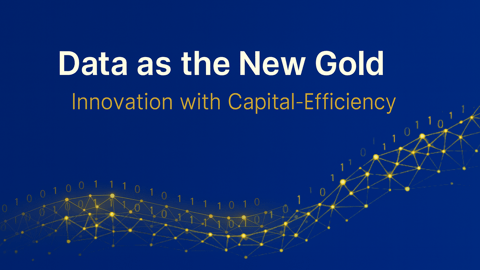In biotech, data isn’t an asset — it is the asset. For many early-stage companies, the experimental results, protocols, and research records they generate are the foundation of their value as a pre-revenue company. Yet, without a robust strategy to store, organize, and share this information, data can quickly become fragmented, inaccessible, or even lost, and with it value.
In a recent presentation, the team from Collaborative Drug Discovery (CDD) — creators of CDD Vault, a research data management (RDM) platform — explored how biotech startups and their investors can turn data management into a competitive advantage.

Why Data Management is a Strategic Advantage
Mitchell Buckley, Application Scientist at CDD, framed it clearly: whether your company is at a grant-funding stage or gearing up for exit, your data’s integrity, accessibility, and security determine how fast and effectively you can progress. Strong data management practices can:
- Accelerate R&D by making it easy to search, analyze, and share results.
- Improve decision-making with reliable, organized datasets.
- Reduce costs by avoiding re-runs caused by lost or inconsistent data.
- Enable AI/ML integration through standardized, interoperable data formats.
- Enhance investor confidence with professional, robust, and audit-ready records.
For investors, well-managed data is a sign of operational maturity, scalability, and long-term viability.
The Problem: Data Silos
In many biotech workflows, information ends up isolated in “data silos” — separate, incompatible formats such as Word documents, PDFs, Excel sheets, CRO reports, and email attachments maintained by different stakeholders. This creates several issues:
- Lack of searchability across datasets.
- Loss of metadata during file transfers.
- Multiple “sources of truth” leading to confusion.
- Unclear Ownership creating duplicate work, gaps and conflicting outputs.
- Reduced reproducibility and compromised regulatory compliance.
These inefficiencies slow due diligence, impede a company's ability to scale, and lead to poor decision making from fragmented insights.
The Solution: Centralized, FAIR Data
CDD Vault addresses these challenges by providing a central, searchable repository for all research data. Built around FAIR principles (Findable, Accessible, Interoperable, Reusable), it ensures:
- Entity registration & metadata capture for molecules, biologics, proteins, nucleotides, plasmids, cell lines, and more — with unique, consistent identifiers.
- Integrated biological data linked directly to registered entities.
- Automated data visualization from raw instrument outputs to publication-ready figures.
- Configurable permissions to control access for internal teams, CROs, and investors.
- Regulatory compliance features such as audit logs, backups, and 21 CFR Part 11 readiness.
Key Features Demonstrated
During the live demo, Mitchell showcased how CDD Vault streamlines workflows:
- Entity & Data Registration – Ensures consistent naming and metadata for every registered entity, avoiding duplication and mislabeling.
- Automated Screening Dashboards – Executes predefined searches to instantly identify lead compounds meeting set criteria.
- Visualization Tools – Produces live, interactive plots directly from assay data.
- Electronic Lab Notebook (ELN) – Centralizes experiment records, enabling direct CRO data entry and full-text searchability.
- Inventory Management – Tracks sample locations, amounts, and usage history.
Why It Matters for Fundraising
Well-structured, transparent datasets make due diligence faster and more compelling. For startups, this means less time scrambling to prepare reports and more time focusing on the science. For investors, it means confidence that the company can scale, protect its IP, and make informed, data-driven decisions.
Final Takeaway
As Mitchell put it, the ultimate goal is to identify and advance a lead candidate “in the shortest amount of time, in the most capital-efficient way.” CDD Vault helps biotech companies get there by eliminating data chaos, enabling collaboration, and giving both researchers and investors a clear, real-time picture of progress.
If your biotech startup is looking to stay agile, secure funding faster, and maximize the value of its data, it might be time to consider making robust research data management your next strategic investment.
CDD Vault, on the other hand, is optimized for managing and interpreting scientific data across the full discovery process. It’s the better choice when your team needs to register compounds, link results to chemical structures, analyze SAR trends across studies, or share data in real time with collaborators. With audit trails, traceable curve models, and cloud-based security, CDD Vault functions as both a data backbone and a full-featured data visualization software platform.
In many labs, these tools work best in tandem: Vault for organizing and analyzing the science, Prism for refining the story.
Other posts you might be interested in
View All Posts
CDD Insights
6 min
February 26, 2025
A Buyer’s Guide for Scientific Data Management Platforms
Read More
Webinars
1 min
November 22, 2025
From Hype to Practice: Where AI Actually Helps in Drug Discovery - 2025 Canadian UGM Replay
Read More
CDD Vault Updates
4 min
November 3, 2023
CDD Vault Update (November 2023): Importing Text in Data Files, and APIs for Structure Images, QC Report Details and Ambiguous Structures
Read More


